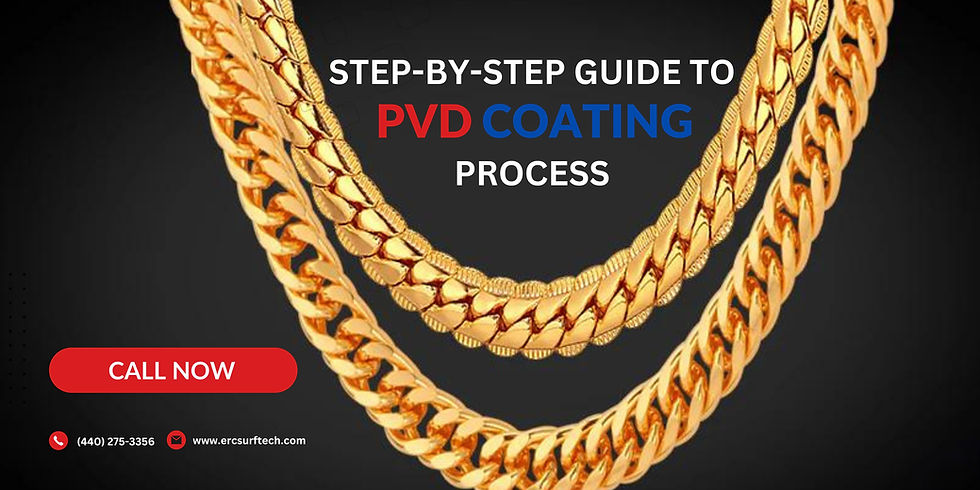Boost Electroplated Parts with PVD Coating
- surftech22
- May 14, 2024
- 3 min read

PVD coating, or Physical Vapor Deposition, offers a myriad of advantages when applied to electroplated parts. In this comprehensive guide, we will delve into the intricacies of this process, outlining its benefits and shedding light on why it has become a preferred choice in various industries.
Understanding the PVD Plating Process
Before we delve into the benefits, let's grasp the fundamentals of the PVD plating process. PVD involves the deposition of a thin film coating onto a surface through the condensation of a vaporized form of the desired material. This process occurs in a vacuum environment, ensuring precise control over the coating's thickness and uniformity.
Enhanced Durability and Corrosion Resistance
One of the primary benefits of PVD coating on electroplated parts is its exceptional durability and resistance to corrosion. The deposited coating forms a protective barrier, safeguarding the underlying material from harsh environmental conditions, chemicals, and wear and tear. This extends the lifespan of the parts, reducing the need for frequent replacements and maintenance.
Improved Surface Hardness
Another notable advantage of PVD coating is its ability to enhance the surface hardness of electroplated parts. By forming a dense and uniform layer, the coating significantly increases the hardness of the substrate material, making it more resistant to scratches, abrasion, and impact damage. This is particularly beneficial in applications where parts are subjected to high levels of mechanical stress.
Enhanced Aesthetic Appeal
In addition to its functional benefits, PVD coating also offers aesthetic advantages. The thin film deposition process allows for precise control over the coating's color and finish, enabling manufacturers to achieve a wide range of decorative effects. Whether it's a sleek metallic finish or a vibrant hue, PVD coating can enhance the visual appeal of electroplated parts, making them more attractive to consumers.
Eco-Friendly Solution
PVD coating is recognized for its eco-friendly nature compared to traditional plating methods. Unlike electroplating, which often involves the use of hazardous chemicals and generates toxic waste, PVD is a clean and environmentally sustainable process. It produces minimal waste and emissions, making it a preferred choice for companies committed to reducing their environmental footprint.
Why Choose Us
When it comes to PVD coating solutions for electroplated parts, ERC SurfTech stands out as a trusted industry leader. Here's why you should choose us:
Expertise: With 15 years of experience in the field of surface engineering, we possess the knowledge and expertise to deliver exceptional PVD coating solutions tailored to your specific requirements.
State-of-the-Art Facilities: Our advanced manufacturing facilities are equipped with cutting-edge PVD coating equipment, allowing us to achieve precise and consistent results with every project.
Customized Solutions: We understand that every project is unique, which is why we offer customized PVD coating solutions to meet your exact specifications and application needs.
Quality Assurance: At ERC SurfTech, quality is our top priority. We adhere to strict quality control measures throughout the coating process to ensure that each part meets the highest standards of performance and durability.
Customer Satisfaction: We are committed to providing superior customer service and support at every stage of your project. From initial consultation to final delivery, we strive to exceed your expectations and earn your trust.
Conclusion
PVD coating offers a host of benefits for electroplated parts, including enhanced durability, improved surface hardness, aesthetic appeal, and eco-friendliness. By choosing ERC SurfTech as your PVD coating partner, you can ensure superior quality, reliability, and customer satisfaction. Experience the advantages of PVD coating for your electroplated parts today.
Reference URL :- Boost Electroplated Parts with PVD Coating





Comments